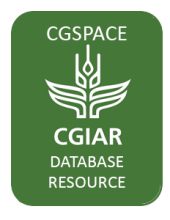/ library resources
Showing items 67627 through 67635 of 73534.• Limited access to credit, e.g., due to a lack of collateral and documented land rights, exposes smallholder farmers to risk and liquidity constraints
Work package 4 maps rice areas using remote sensing, geographic information system (GIS), and crop modeling.
In most developing countries, although agricultural extension and research devolved since 1980s to promote relevance, cost-effectiveness, ownership, and sustainability, participatory action research (PAR) have been run, albeit with limited empirical evidence on their impacts on farmers livelihood
Climate change is projected to cause an increase in average temperatures in Zambia and a decline in rainfall, particularly in the southern and western regions.
Substantial model variability exists regarding the likely meteorological impact of climate change on Kenya, particularly with respect to future precipitation levels. Significant regional differences are expected, largely due to Kenya’s diverse climate profile.
Mozambique is already vulnerable to extreme weather events and climate change is projected to exacerbate their frequency and intensity. The occurrence of cyclones and flooding has increased in recent years and the trend is expected to continue.
• Agriculture in Africa has untapped potential to meet regional and global food demands, but it faces
challenges like fragmentation, inefficient value chains, and climate shocks. Transforming food systems will
come at a cost.
Crop varietal and breeding lines selection is predominantly performed in controlled research stations, which may not properly represent African farmers’ crop growing environmental conditions.
Pagination
Land Library Search
Through our robust search engine, you can search for any item of the over 64,800 highly curated resources in the Land Library.
If you would like to find an overview of what is possible, feel free to peruse the Search Guide.

